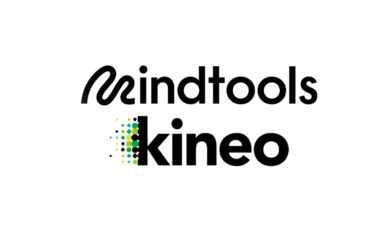Learning at work can be a serious struggle. If you’re stretched to the limit, and struggling with all the stuff that’s already in your head, how can you possibly learn anything new?
In one organization I worked for, learning came to feel downright impossible!
Maybe this rings a bell for you. Information was coming thick and fast. There were complex new structures and systems to get to grips with. The pressure to adapt was ramped up for everyone, and I knew I needed to learn quickly. Trouble was, most days I felt too rushed, tired and stressed to learn anything at all.
I wasn’t the only one. People started quitting, and the burden on everyone else just grew.
The problem wasn’t a lack of training on offer. The instruction documents, process manuals, and other supposedly useful resources were piling up, and everyone’s calendar was full of course dates. The real issue was that nobody felt able to do any of it!
We desperately needed to learn, in order to adjust and improve. But we were stuck.
Luckily, I stayed there long enough to see things get better. It took a major overhaul of leadership, and it didn’t happen overnight. But before too long, learning at work started to feel possible again, and the difference – for me, and for the business as a whole – was huge.
Changing for the Better
Some of the changes were organizational. Work patterns were altered to give us proper time to learn – and to put our new knowledge and skills into practice. Managers got their people to choose training that was relevant and purposeful. For the first time, I understood how my individual learning linked to the overall business plans.
Other changes were cultural. We were encouraged to learn together. People fed back about the learning they’d done – not just in meetings but in the lunchroom, too. Experimentation was actively encouraged. We held fun events where we shared non-work skills. One Friday, Tony taught us how to juggle!
But maybe the most noticeable difference was that staff well-being was prioritized. Flexible working became a real option. There were nicer cookies in the kitchen. I’m sure I wasn’t the only one who felt that my brain worked better.
I don’t think it’s an exaggeration to say that learning pushed us forward as an organization. In one meeting, I remember someone saying it was actually fun trying to solve problems that had previously held us back! We got into Case Study-Based Learning, giving us insights from elsewhere that we plowed back into our own work.
It proved to me that learning is so much more meaningful when you put it to the test.
Making Learning at Work Work!
So what are the keys to great learning at work?
There’s no shortage of research about how children learn, but much less about adults. We still rely a lot on work done in the 1960s by American educator, Malcolm Knowles. He coined the term “andragogy” for the study of what helps adults to learn (distinct from “pedagogy,” meaning how we teach our kids).
Knowles picked out six things that can help:
1. Knowing why we’re learning something.
2. Learning from real experience.
3. Having a say in what and how we learn.
4. Focusing on relevant knowledge and skills.
5. Solving problems.
6. Being able to motivate ourselves.
When my company changed for the better, all these principles played their part. It certainly didn’t take lots of formal training to get everyone learning again. Instead, we made it easier for people to learn from the real work they and their teams were doing every day.
The 70:20:10 model can be helpful for getting this balance right: 70 percent learning from experience; 20 percent “social” learning, from colleagues and contacts; and just 10 percent direct training.
I’m sure it’s best not to set this ratio in stone, though, but to be responsive and alert. Organizations move quickly, and what we need to learn also changes rapidly – along with the techniques and technologies at our disposal.
Lessons in Learning
Other things I’ve learned about learning? As obvious as it may sound, it’s hard to learn well when you’re distracted. Far too often, I think, we try to learn when our mind’s just not on the job.
And you don’t have to concentrate for long. Well-chosen learning opportunities can be slotted into small gaps in your day. Technology helps me: I’ve learned from podcasts at lunchtime, and I often watch video tutorials on the train.
We’ve also got to acknowledge that not all learning works first time. I recommend returning to resources that have helped in the past. Think how often your teachers went back over key topics at school!
But learning can still happen quickly. My organization got a new lease of life when it started expecting rapid benefits from learning. I’ve also worked in schools, and I’ve seen the power of pacy teaching and learning.
In fact, I think we can learn a lot from kids, period. As a parent, I’ve noticed that my own children learn best when they’re excited about doing it.
Their teachers also work hard to make learning relevant, and schools are putting increasing emphasis on the core skills of learning. Being organized, having a strong memory, learning well with others… They’re skills that serve us well long after our school days are done!
Back to School
So don’t stop being a student. When my own organization refocused on learning, it felt absolutely right to go back to some of my old student behaviors. I carried a notebook to capture important information and ideas, and I dug out some of the memory strategies I’d learned at school. Mnemonics can be extremely effective for learning at speed and under pressure.
Schools encourage active learning, and the best ones work on their students’ physical and mental well-being to help. I’ve seen how much my own learning benefits from physical relaxation methods, mindfulness techniques, and general well-being advice. I love running, and I always feel sharper when I’ve been out for a few miles – or even just had a quick walk after lunch.
What about you? What gets you learning at work, amid everything else you’ve got to do? And what are the secrets of creating a great learning culture for everyone?
We can all learn from each other… so join the discussion, below!





Comments
Jolene5 says
6 years agoI think continuous learning is critical for keeping your people engaged. When learning stops or is not encouraged, people begin to feel stagnated and begin looking elsewhere for work that challenges them and for employers who value them. No one likes to just be stressed out and working for someone else, if people aren't getting something in return it makes it very hard to keep employees engaged and motivated in their jobs.
Midgie Thompson says
6 years agoThanks for sharing your thoughts. I agree that people want to be challenged and stimulated by what they do, as well as needing to be acknowledged and recognized for their contribution. By doing so, it helps to keep people engaged and possibly even more loyal! - Midgie, MT
James says
6 years agoMalcolm Knowles studies are working still. The main thing that motivates me is knowing why I'm learning something.
And you are so right saying that learning at work depends on staff well-being, time management, and allocated time for study. But unfortunately, most offices don't offer such benefits.
And also, want to mention that 70:20:10 model works well for me.
Midgie Thompson says
6 years agoWhen we know the reason why for most things James, it certainly helps to motivate us and to keep on going!